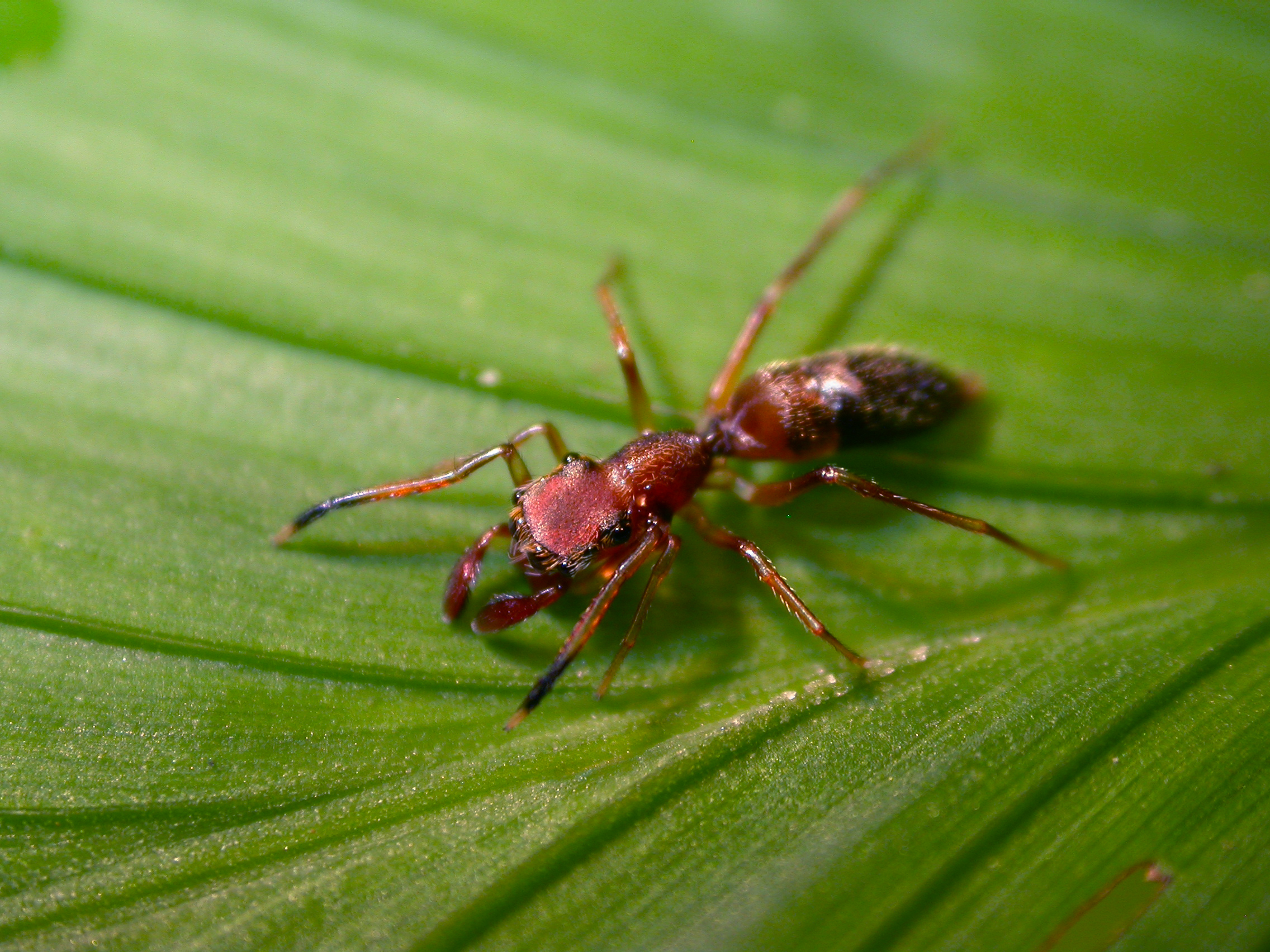 A jumping spider (Hypaeus benignus) from
the La Selva Biological Station in Costa Rica. H. benignus is about 7 millimeters
long.
A jumping spider (Hypaeus benignus) from
the La Selva Biological Station in Costa Rica. H. benignus is about 7 millimeters
long.
More
about these Images
As part of her dissertation research,
supported by a National Science Foundation graduate research fellowship, Lisa
Taylor of Arizona State University's (ASU) School of Life Sciences studied
mimicry in the jumping spider family Salticidae. Salticidae are the largest
family of jumping spiders in the world.
In biology, mimicry is the similarity of
one species to another. The mimicry may offer protection from predators for one
or both of the species involved, and may help the mimic acquire food more
easily. The mimicking species may be similar to the mimicked in appearance,
behavior, sound, scent and location.
There are four types of mimicry used by
spiders:
• Batesian--When the mimic takes on
characteristics of an organism that is harmful (may sting or bite) and bad
tasting, like an ant or wasp, thus helping the spider avoid becoming a meal
(Taylor believes that most of the jumping spiders she studied were Batesian
mimics).
•Wasmannian mimicry--When the mimic
resembles an organism in order to come and go in the organism's territory undisturbed,
and may or may not be harmful to the organism. For example, the ability to
mimic ants (the technical term for this is myrmecomorphy), particularly those
with nasty stings and bites, gives jumping spiders protection from the
predators that feed on them such as birds, wasps and lizards. Mimicking ants
also gives spiders access to areas where they can hunt and hide that typically
would be off limits. Some spiders have the ability to smell like ants--ants use
chemical signals to communicate. By mimicking the scent of ants, the spiders
can roam freely in and out of ant nests, where they may live or feed on ant
larva.
 •Peckhamian (or aggressive)
mimicry--When an aggressive mimic imitates its prey so it may feed on it more
easily. For example, the bolas spider hangs a glob of sticky glue in the air
that contains a chemical that mimics the pheromone of a female moth. When male
moths fly near to check out the potential "mate," they get stuck to
the blob and become a meal for the spider.
•Peckhamian (or aggressive)
mimicry--When an aggressive mimic imitates its prey so it may feed on it more
easily. For example, the bolas spider hangs a glob of sticky glue in the air
that contains a chemical that mimics the pheromone of a female moth. When male
moths fly near to check out the potential "mate," they get stuck to
the blob and become a meal for the spider.
•Mullerian mimicry--When the mimic has
distinctive, brightly striped patterns that resemble those of a toxic bee or
wasp (although no toxic jumping spiders have been identified so far). For
example, spiders that mimic the large, fuzzy and brightly colored velvet ant
(which is actually a wingless wasp) are protected from potential predators
because they associate bright-colored creatures with a painful sting and stay
away.
Currently, Taylor is studying the
courtship rituals of jumping spiders. In particular, she is interested in how
animals use color to communicate. In her dissertation work at ASU, she is
working with a group of colorfully ornamented jumping spiders (like the ones
pictured here) in the genus Habronattus. She's trying to understand how they use
color to advertise themselves to potential mates and competitors, as well as to
deceive and avoid potential predators. (Date of Image: 2005-2010)
Credit: Lisa Taylor, Arizona State
University






No comments:
Post a Comment